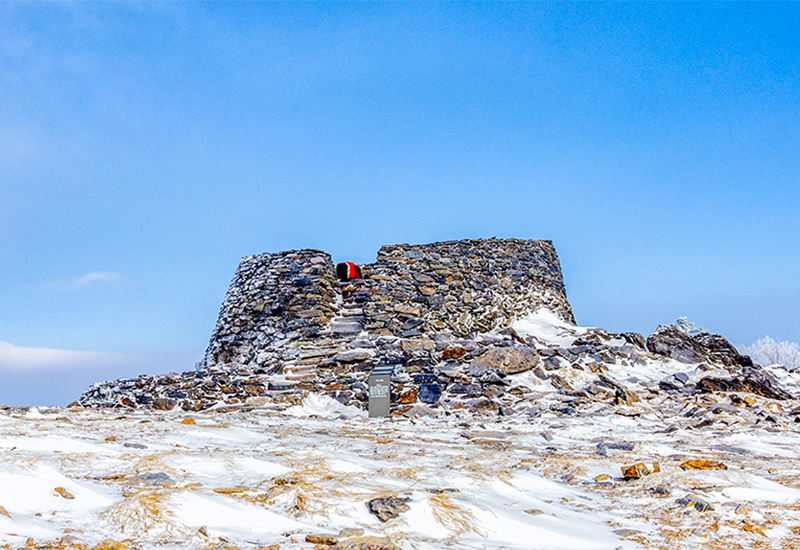
It is a circular altar with a circumference of 27m and a width of
8m and a height of 3m at the top of Taebaeksan Mountain.
The altar, which is said to have been built by kings during the Joseon Dynasty in Nokdan-gun, was designated as an important national-designated folklore material. It is also a torch-lighting place for the Gangwon-do Provincial Sports Festival.

Water, flowing down from Hwangji, penetrates into a big mountain when it arrives at Dongjeom-dong. Here it meets a big stone gate, and spreads out to create a deep marsh called Gumunso. In Chinese characters, Gumunso (Ï´Ú¦á»), Ï´Ú¦ signifies a hole or cave. Another word for Gumunso is Tturunae, since water flows penetrating into a mountain. The surroundings of Gumunso are made of limestone. It is 20¡30 meters high and 30 meters across, and is several times larger than the entrance of Hwanseon Cave, regarded as the largest in the Orient. This strange mountain range was created between 150 million and 300 million years ago, boasting its rareness in Korea. Strangely shaped cliffs lined with pine trees create a panoramic view. Located in this region are the Gumun Palgyeong, the eight most famous sightseeing sites in the Gumun area, including Madangso marsh, Jagaemun gate, Yongso marsh, The Three Borthers' Falls, Yeoulmok, Ttongso marsh, a unique rock shaped like the head of a rooster and Yongcheon stream. In particular, a 4-km-long waterside in the vicinity of Gumunso is an optimal place for geological searching for rocks dating back to the Paleozoic period. Gumunso and its surroundings are designated as Natural Monument ¢à417, for Gumunso's ancient environment and its exposed rocky outcrops. The Gumunso educational field trip site is also here, providing interested visitors with an-hour-long tour of Paleozoic rock formations.
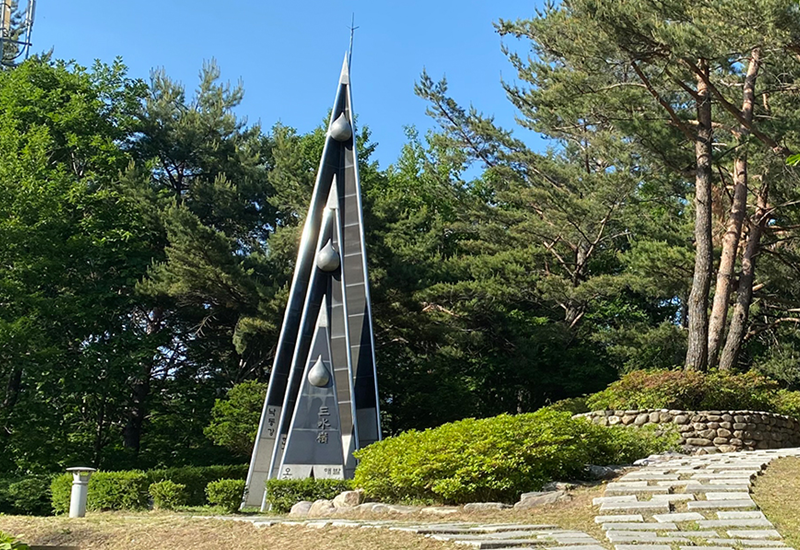
If you drive toward Samcheok on National Road ¢à 35 from downtown of Taebaek-si, you will come to a ridge rising 920 meters above sea level. This is the watershed where the Hangang, the Nakdonggang and the Osip Stream diverge. Water which falls here as rain flows to the West Sea via the Hangang, to the South Sea via the Nakdong, and to the East Sea via Samsuryeong. On its summit, there is a monument and a pavilion. Samsuryeong has also been called Pijae, meaning a ridge where people sought refuge, a reference to a time when the people of Samcheok fled here to escape a war.
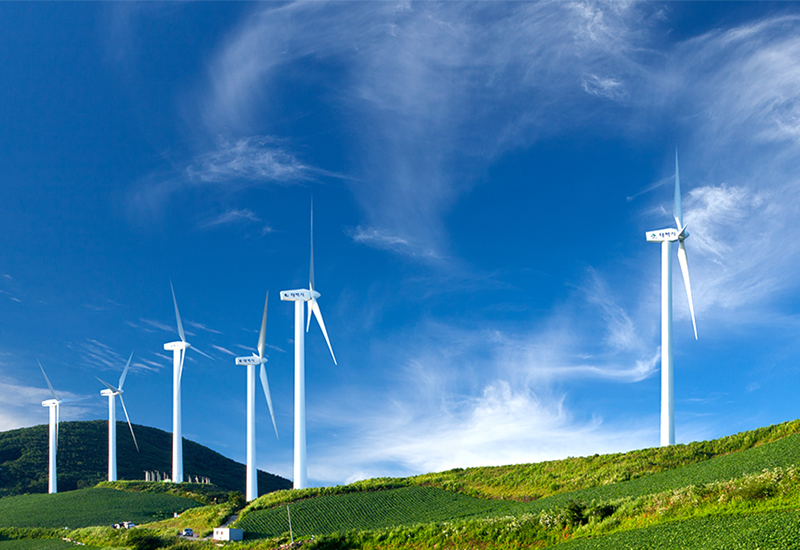
Mt. Maehbong, 1,330 meters above sea level, is also knows as Cheonuibong. This mountain serves as the source of the Nakdong and the NamHangangs. It is also the point where the Mt. Taebaeksan range and the Mt. Sobaek range diverge. This is where the Nakdong Jeongmaek is divided in the course of Baekdudaegan, and where mountain rains collect to form the Hangang, the Nakdonggang and the Osip Steam. The Korea American Foundation developed a land area of 200,000 pyeong (1 pyeong = 3.954 sq. yd.) to establish the nation's best highland vegetable cultivation complex. From its summit, you can enjoy a panoramic view of Taebaek City and Baekdudaegan in the East Sea.

Mt. Hambaek, 1,573 meters above sea level, stands between Taebaek-si and Jeongseon-gun. From its summit you can enjoy a breathtaking view of the surrounding mountains such as Taebaek, Ilwol, Baekun and Gariwang. Along its ridge are located a group of trees such as yews and dead ones, which are used in preparing herbal medicines. According to Samguk Yusa (a history of the Three Kingdoms), Mt Hambaeksan was once known as Mt. Myogosan, meaning a grandiose, spiritual mountain, and thus came to be HOME to many temples, including Bonjekam, Simjeokam, Myojeokam and Unjeokam. One thousand three hundred years ago, the monk Jajang Yulsa, in accordance with a revelation from Munsu Bodhisattva, found a ring to expel a huge serpent, and on that spot he built Jeokmyeol Bogung Pagoda and Sumano Pagoda to keep the bones of the Buddha. As a result, a yew tree standing next to Jeokmyeo Bogung is known as Seonjangdan, a reference to the cane which Jajang Yulsa thrust into the ground which subsequently came to life. Gukrakgyo and the valley below Jeongamsa are additionally famous for fresh-water salmon, designated as Natural Treasure ¢à73.
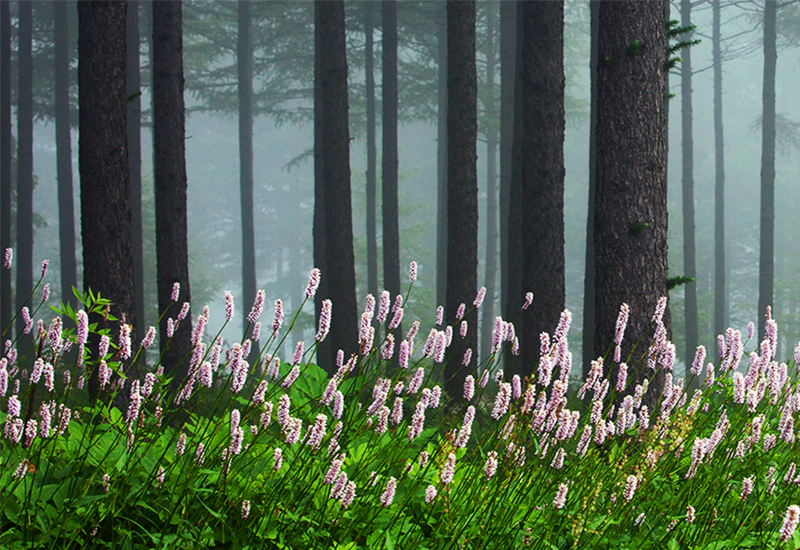
The 1.26 million pyeong area in the neighborhood of Geumdaebong Peak(1418.1m) and Daedeoksan (1307.1m) has been designated as the protected ecosystem in Gangwondo, by the Ministry of Environment. Comprehensive researches in the natural resource had been done for two years before it was designated as a protected area by the Ministry of Environment.
At that time, Daeseongsan was named for Daesung Primary School in Gohan instead of Geumdaebong Peakby the Ministry of Environment. The local residents made a protest with the argument that there is no mountain nearby called Daeseongsan so that Daeseongsan is called Geumdaebong as a new name.
During the research period, fifteen or sixteen rare plants which are specialities of Korea and goshawks, sparrow hawks, black eagles which are designated as natural treasures were found.
Group habitats of animals such as lizards in Doomoondong Valley, Gohanjjok, salamanders in Hansori Valley, and Korean clawed salamanders and 13 insect species unregistered in Korea have been found.
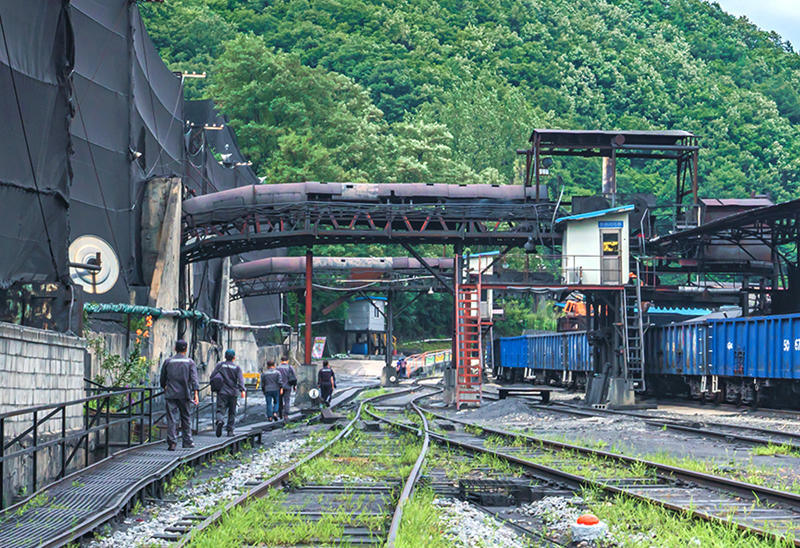
It is the first anthracitic coal-fired facility in Korea in operation
to date, which was designated as a national registered cultural property on May 31, 2002.
It is a facility that selects and processes raw coal mined in coal mines, and is also a representative example of an industrial facility applying modern materials and construction methods.

This place is famous for the scenery of the highland cabbage field
covering the mountains around the village in summer, and the scenery and sunrise of the village surrounded by snow in winter.
The sunrise seen here is known to be faster than the sunrise seen on the east coast or at the top of Taebaeksan Mountain.